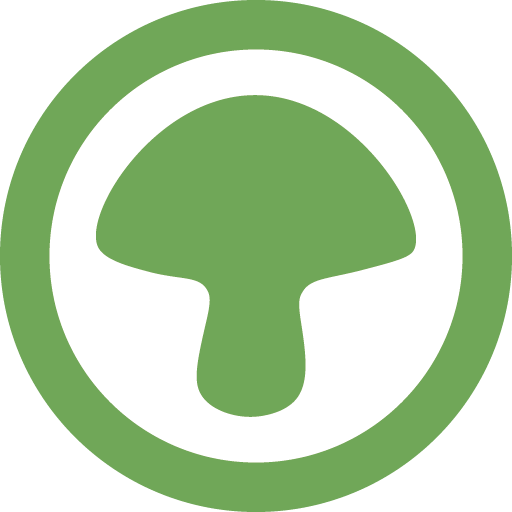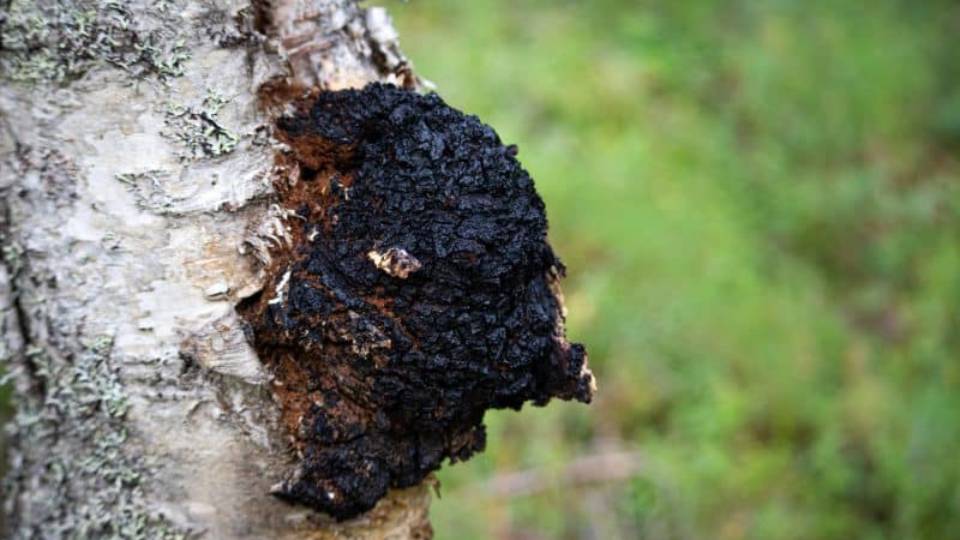Chaga Mushroom Identification: The Ultimate Guide For Foragers
Chaga mushroom is a highly regarded wild, edible fungi known for its potent superfood qualities. It differs significantly from other mushrooms as a unique parasitic fungus. Traditionally harvested from the wild, Chaga is now cultivated in select locations to meet the rising demand for its potential health benefits[1]. However, identifying Chaga can be challenging due to the presence of various growths that may be mistaken for false Chaga. Let’s explore the distinguishing characteristics of Chaga and how to differentiate it from other fungi.
In this article:
Physical Characteristics of Chaga
When it comes to chaga mushroom identification, understanding their distinct physical characteristics at different stages of growth is crucial. In the early stages, chaga appears as a small, irregularly shaped protrusion on the tree bark. As it matures, it undergoes a transformation, developing a blackened, crusty exterior with a rough texture. Upon cutting open, the interior of chaga reveals a distinctive golden-yellow color and a woody, fibrous composition.
Chaga Mushroom Benefits
Chaga mushrooms have been utilized for centuries in Siberia and other parts of Asia to enhance immunity and overall well-being. Here are some benefits you can gain from chaga mushrooms:
- Reduces inflammation: Chaga mushrooms combat inflammation, known to cause issues like irritable bowel syndrome, by fighting harmful bacteria and reducing overall inflammation in your body[2].
- Fights cancer: Rich in antioxidants, chaga mushrooms help prevent cell damage caused by free radicals and oxidative stress, potentially slowing down cancer growth[3].
- Lowers blood sugar: Chaga mushrooms have shown promise in reducing blood sugar levels and improving insulin resistance[4].
- Lowers cholesterol: Chaga mushrooms may contribute to lower levels of “bad” cholesterol, a significant risk factor for heart disease.
- Boosts the immune system: By reducing chronic inflammation and battling harmful bacteria and viruses, chaga mushrooms support immune function and stimulate the production of beneficial cytokines, which are crucial for fighting off infections.
IMPORTANT
It’s important to remember that further research is needed to fully understand the effects of chaga mushrooms on human health. If considering chaga mushroom as a supplement, consult with your doctor for guidance.
How to Identify Chaga Mushroom
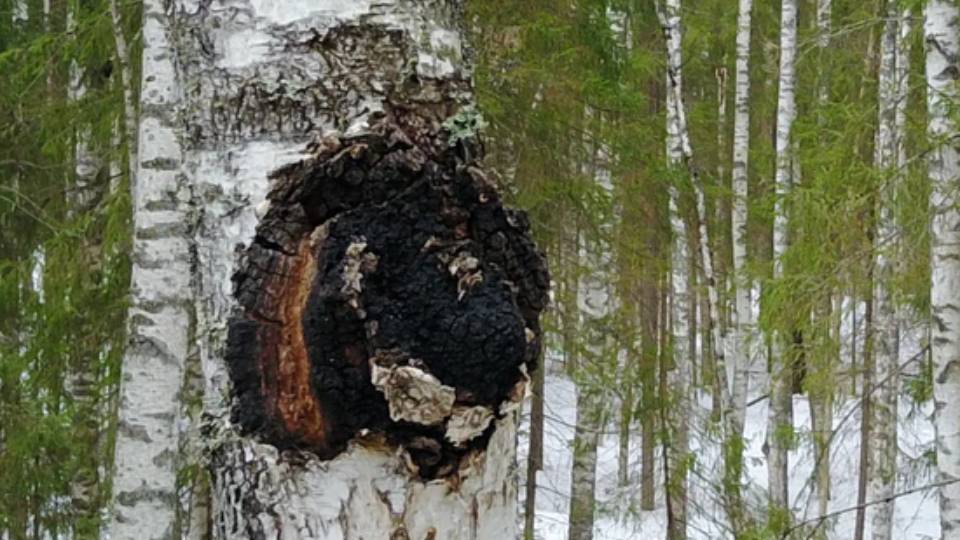
1. Where Chaga Grows, Season, Growth Habitat, and Distribution
Chaga primarily grows on birch trees, especially on wounded or stressed ones. It is commonly found in the northern regions of North America, Europe, and Asia. The growth of chaga is most prevalent in cold climates, and it can be harvested throughout the year. Understanding the preferred habitats and distribution patterns of chaga is crucial for successful identification.
2. What Type of Trees It Grows On and Ecosystems It Thrives In
Chaga predominantly grows on various species of birch trees, including yellow birch, white birch, and paper birch. It can also be occasionally found on other hardwood trees such as oak and maple. Chaga favors old-growth forests and areas with minimal human disturbance. It thrives in cool, moist environments, often in regions with high humidity.
Chaga Lookalikes
When it comes to chaga mushroom identification, it’s important to be able to distinguish it from various common lookalikes. To ensure accurate identification, here are four frequently encountered fungi that resemble chaga. By understanding the distinguishing features of these lookalikes, you can confidently differentiate them from genuine chaga mushrooms.
| Name | Appearance | Differences from Chaga |
|---|---|---|
| False Tinder Fungus | Black, woody exterior | Lacks the distinctive orange inner core |
| Birch Polypore | Shelf-like with white undersides | Does not have the same dark, canker-like appearance |
| Horse Hoof Fungus | Brown and hoof-shaped | Absence of the orange/yellow interior |
| Artist’s Conk | White, with a pore surface | Lacks Chaga’s unique growth on trees |
What is Chaga?
Chaga goes through a complex life cycle, starting with the spores released from mature conks. These spores need a suitable host, usually a birch tree, to establish a symbiotic relationship. The mycelium of chaga penetrates the tree’s bark, extracting nutrients and causing the tree to develop a woody conk over time. This conk, often resembling a large burnt mass, is the visible part of chaga. Although not a true mushroom, chaga has gained the popular name of “mushroom” due to its similar growth pattern and usage in traditional medicine.
Chaga has a rich history of use in traditional medicine, particularly in regions like Siberia and northern parts of North America. It is believed to possess various health benefits, including immune-boosting properties and potential anti-cancer effects.
NOTE
However, it’s important to note that scientific research on chaga is still ongoing, and many of its traditional uses require further validation.
Harvesting and Using Chaga
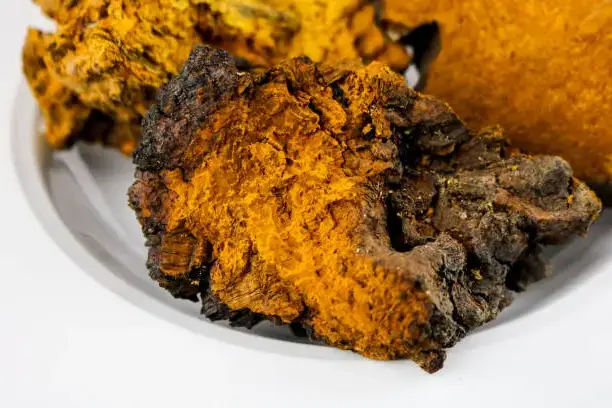
Harvesting chaga responsibly is essential to ensure its sustainability and minimize harm to the host trees. Here are some important considerations:
- Chaga should only be harvested from living birch trees, as extracting it from dead trees can negatively impact forest ecosystems.
- It’s crucial to correctly identify chaga and avoid false chaga, which might resemble the genuine fungus but lack its medicinal properties.
- Harvesting chaga involves carefully removing the conk from the tree without causing significant damage.
- Once harvested, chaga can be processed and used in various forms, including Chaga tea, tinctures, and extracts. Each preparation method requires specific techniques and instructions.
Safety Considerations
While chaga has been traditionally consumed as a health tonic, it’s important to be aware of the potential risks associated with its consumption.
Some considerations include:
- Chaga should be sourced from trusted suppliers to ensure its quality and avoid contamination with mycotoxins.
- Individuals with allergies to mushrooms should exercise caution when using chaga products.
- As with any natural product, chaga may interact with certain medications, so it’s advisable to consult a healthcare professional before incorporating it into your routine.
Finding a Trusted Source for Chaga
When seeking chaga for consumption or other purposes, it’s crucial to find a trusted source. Consider the following:
- Look for suppliers or retailers who prioritize quality, sustainability, and ethical harvesting practices.
- Seek certifications or third-party testing that ensures the purity and authenticity of the chaga products.
- Reviews and recommendations from other customers can provide valuable insights into the reliability of a source.
By choosing a trusted source, you can have confidence in the quality and integrity of the chaga you obtain.
Brewing Chaga Mushroom Tea
One popular way to enjoy the benefits of chaga is by brewing it into a flavorful and nutritious tea. Here’s a simple recipe to prepare chaga mushroom tea:
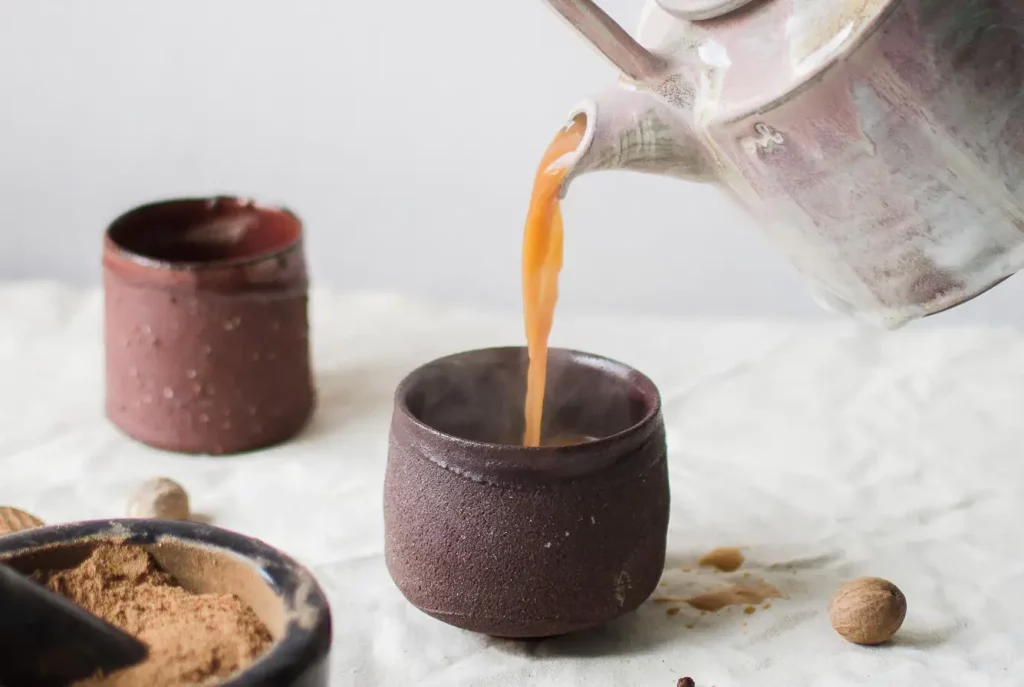
Ingredients:
- 1 tablespoon of dried chaga chunks or powder
- 4 cups of filtered water
Instructions:
- In a medium-sized saucepan, combine the dried chaga and water.
- Bring the mixture to a gentle boil over medium heat.
- Reduce the heat to low and let the tea simmer for 20-30 minutes.
- Remove the saucepan from the heat and allow the tea to steep for an additional 10 minutes.
- Strain the tea into cups or a teapot, discarding the chaga chunks or powder.
- You can enjoy the tea as is or add sweeteners like honey or maple syrup to taste.
- Serve the chaga tea hot and savor its unique flavor and potential health benefits.
FAQs
Does Chaga Have Any Look-Alikes?
Yes, chaga mushrooms have several lookalikes that can be mistaken for genuine species. These lookalikes include other fungal growths on trees, such as conks and burls. It’s important to accurately identify chaga mushrooms to avoid harvesting harmful or ineffective substitutes.
Can Chaga Be Found in The United States?
Yes, Chaga can be found in the United States. It typically grows on birch trees in colder regions like the northern states and Alaska. If you’re foraging for Chaga, ensure proper identification and responsible harvesting practices, or consider purchasing it from reputable sources for safety and sustainability.
What Are The Health Benefits of Chaga Mushroom?
Chaga mushroom offers potential health benefits, including boosting the immune system, reducing inflammation, and providing antioxidants. It may also support digestive health, improve skin conditions, and help manage stress. However, more research is needed, and it should be used as a supplement, not a replacement for medical advice.
Are There Any Side Effects of Consuming Chaga?
Chaga is generally safe, but excessive consumption can lead to digestive discomfort. If you have allergies to mushrooms or take immunosuppressive medications, avoid them. Pregnant and breastfeeding individuals should also refrain. Always consult a healthcare provider for personalized guidance and to monitor for any potential side effects.
Where Can I Find a Trusted Source For Chaga?
You can find trusted sources for Chaga from reputable health food stores, online retailers, or local herbalists. Ensure they offer certified organic or sustainably harvested Chaga products, and read customer reviews for feedback. Buying from established brands or certified suppliers helps ensure quality and authenticity.
Conclusion
Chaga mushroom identification is an exciting journey into the world of mycology and natural health. By understanding the distinct physical characteristics, growth patterns, and lookalikes of chaga, you can confidently identify this remarkable fungus. Remember to harvest responsibly, find a trusted source, and prioritize safety when incorporating chaga into your wellness routine. Brewing a comforting cup of chaga mushroom tea is an excellent way to enjoy the benefits of this unique fungus while indulging in its earthy flavors. So, embark on your chaga exploration and experience the wonders of nature’s pharmacy.
References
1. Phytochemistry, traditional uses and health benefits of the mushroom inonotus obliquus (Chaga). Retrieved from https://www.researchgate.net/publication/292243402_Phytochemistry_traditional_uses_and_health_benefits_of_the_mushroom_inonotus_obliquus_Chaga
2. Anti-inflammatory effect of Inonotus obliquus, Polygala senega L., and Viburnum trilobum in a cell screening assay. Retrieved from https://www.sciencedirect.com/science/article/abs/pii/S0378874109004036
3. Screening of anti-breast cancer active fractions in inonotus obliquus and its component analysis. Retrieved from https://www.researchgate.net/publication/330658381_Screening_of_anti-breast_cancer_active_fractions_in_inonotus_obliquus_and_its_component_analysis
4. Research of Inonotus obliquus Oligosaccharide in Prevention of Hyperlipidemia. Retrieved from https://www.researchgate.net/publication/356655543_Research_of_Inonotus_obliquus_Oligosaccharide_in_Prevention_of_Hyperlipidemia
